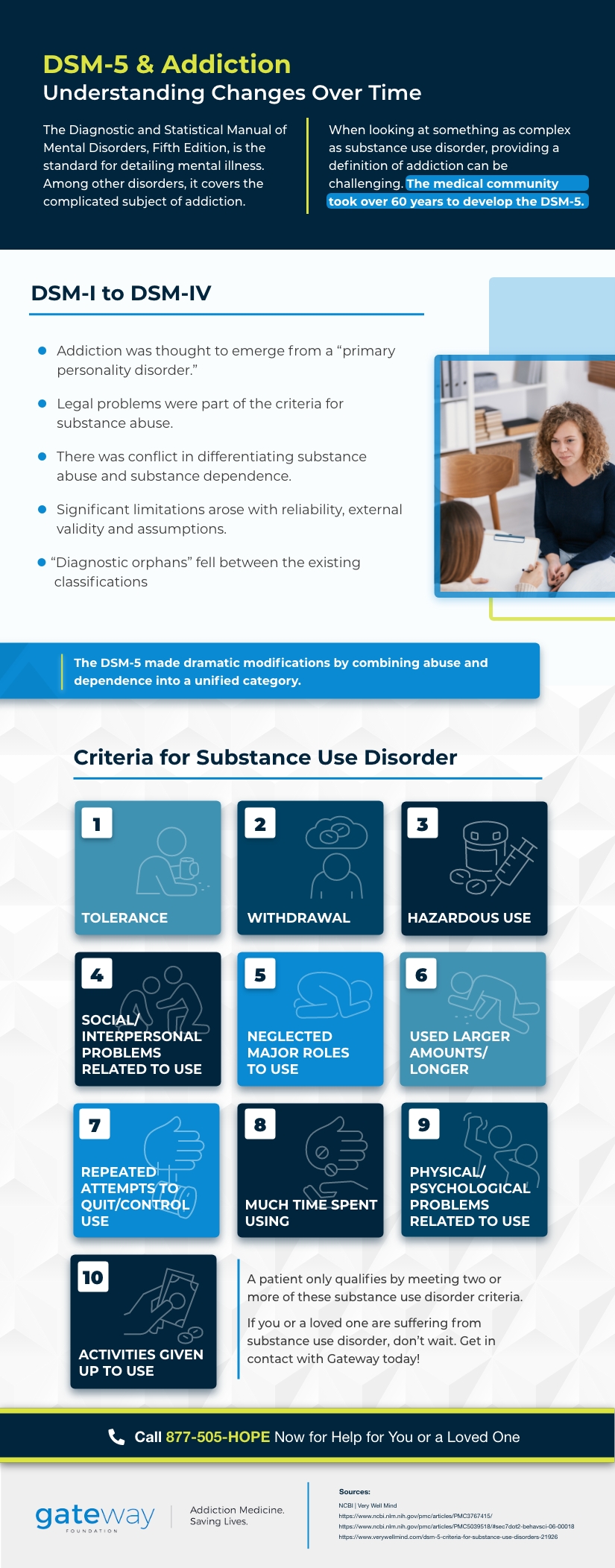- Jun 15
- Addiction
The Diagnostic and Statistical Manual of Mental Disorders (DSM) is a vital diagnostic tool published by the American Psychiatric Association. This text is considered the gold standard on mental health and influences how disorders are investigated, diagnosed and treated — including addiction. DSM-5 is the fifth edition, which was updated in 2013 with input from the top experts in the mental health field.
This latest version improves the DSM’s approach to substance use disorders. No longer is addiction divided into two vague and ill-defined disorders — substance dependence and abuse. Instead, DSM-5 focuses less on withdrawal and more on 11 criteria, or symptoms, that characterize the severity of an individual’s addiction. Let’s explore how these features can better help healthcare professionals recognize and address addiction.
DSM-5’s 11 Criteria for Addiction
According to DSM-5, a substance use disorder (SUD) involves patterns of symptoms caused by using a substance that an individual continues taking despite its negative effects. Based on decades of research, DSM-5 points out 11 criteria that can arise from substance misuse. These criteria fall under four basic categories — impaired control, physical dependence, social problems and risky use:
- Using more of a substance than intended or using it for longer than you’re meant to.
- Trying to cut down or stop using the substance but being unable to.
- Experiencing intense cravings or urges to use the substance.
- Needing more of the substance to get the desired effect — also called tolerance.
- Developing withdrawal symptoms when not using the substance.
- Spending more time getting and using drugs and recovering from substance use.
- Neglecting responsibilities at home, work or school because of substance use.
- Continuing to use even when it causes relationship problems.
- Giving up important or desirable social and recreational activities due to substance use.
- Using substances in risky settings that put you in danger.
- Continuing to use despite the substance causing problems to your physical and mental health.
3 Levels of Severity
Like other illnesses, substance misuse worsens over time. The substance use disorder criteria explained in the DSM-5 allow clinicians to determine how severe a substance use disorder has become depending on how many symptoms are present. For example:
- One symptom could indicate an individual is at risk.
- Two or three criteria point to a mild substance use disorder.
- Four or five symptoms show someone has a moderate substance use disorder.
- Six or more criteria indicate a severe substance use disorder, which signals an addiction to that substance.
Knowing how severe a substance use disorder is can help physicians and addiction specialists determine the best course of treatment for the individual struggling with substance misuse.
Find Evidence-Based Care for Addiction
If you recognize any of these criteria in yourself or someone you care for, it’s time to get help before you’re trapped in a cycle of full-blown addiction. At Gateway Foundation, we use a medical, evidence-based approach that relies on the latest addiction treatment options and advanced therapies to help you find long-term success in recovery. If you would like to learn more, please contact us today.



